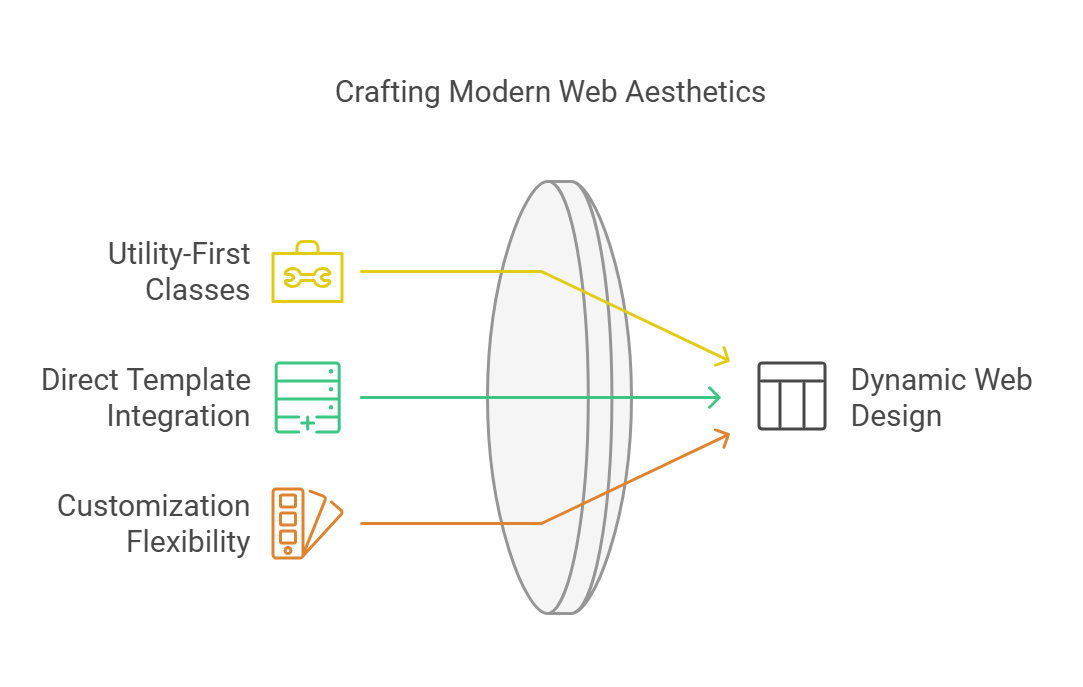Learn how to integrate Django, Tailwind CSS, and AWS Fargate with GitHub for scalable, efficient, and visually appealing web application development. Step-by-step guide with FAQs included.
How to Use Django Tailwind and AWS Fargate with GitHub
Django, Tailwind CSS, and AWS Fargate together create a powerful stack for modern web development. Combining the robust backend capabilities of Django, the aesthetic flexibility of Tailwind CSS, and the scalability of AWS Fargate, you can create a seamless deployment pipeline using GitHub. This article explores how to integrate these technologies and focuses on leveraging their best features to streamline your web app development and deployment.
Step 1: Setting Up the Django Project
- Install Django: Ensure you have Python installed, then install Django using pip:
pip install django
2.Start a New Project:
django-admin startproject myproject
3.Run the Development Server:
python manage.py runserver
Visit http://127.0.0.1:8000 to confirm the project is running.
Step 2: Integrating Tailwind CSS
Tailwind CSS allows you to design directly in your templates with utility-first classes.
- Install Tailwind CSS:
npm install -D tailwindcss postcss autoprefixer npx tailwindcss init
2. Configure Tailwind: Modify the tailwind.config.js file to include your Django templates:
module.exports = {
content: [
"./templates/**/*.{html,js}",
"./static/**/*.{html,js}"
],
theme: {
extend: {},
},
plugins: [],
};
3. Link Tailwind in Templates: Generate the Tailwind CSS file and include it in your Django templates:
npx tailwindcss -i ./static/css/input.css -o ./static/css/output.css --watch
Add the compiled CSS to your base template:
<link href="/static/css/output.css" rel="stylesheet">
Step 3: Deploying with AWS Fargate
AWS Fargate is a serverless compute engine for containers, perfect for deploying your Django project.
- Containerize the Django App:
Create a
Dockerfilefor your project:
module.exports = {
content: [
"./templates/**/*.{html,js}",
"./static/**/*.{html,js}"
],
theme: {
extend: {},
},
plugins: [],
};
2. Push the Image to Amazon ECR:
-
- Authenticate Docker with ECR:
aws ecr get-login-password --region <region> | docker login --username AWS --password-stdin <account_id>.dkr.ecr.<region>.amazonaws.com
- Build and push the image:
docker build -t myproject . docker tag myproject:latest <account_id>.dkr.ecr.<region>.amazonaws.com/myproject:latest docker push <account_id>.dkr.ecr.<region>.amazonaws.com/myproject:latest
Operating System is best for 3D Printing
3. Set Up Fargate Service:
-
- Create a Task Definition in the AWS ECS Console.
- Define the container image, CPU, and memory requirements.
- Deploy the service using the Fargate launch type.
Step 4: Automating with GitHub Actions
GitHub Actions can automate the CI/CD pipeline for your Django app.
- Create a Workflow File:
Inside
.github/workflows/deploy.yml, define the deployment process:
name: Deploy to AWS Fargate on: push: branches: - main jobs: deploy: runs-on: ubuntu-latest steps: - name: Checkout Code uses: actions/checkout@v3 - name: Set up Python uses: actions/setup-python@v3 with: python-version: '3.9' - name: Install Dependencies run: | pip install -r requirements.txt - name: Build and Push Docker Image run: | aws ecr get-login-password --region <region> | docker login --username AWS --password-stdin <account_id>.dkr.ecr.<region>.amazonaws.com docker build -t myproject . docker tag myproject:latest <account_id>.dkr.ecr.<region>.amazonaws.com/myproject:latest docker push <account_id>.dkr.ecr.<region>.amazonaws.com/myproject:latest - name: Update ECS Service run: | aws ecs update-service --cluster <cluster_name> --service <service_name> --force-new-deployment
2.Commit and Push Changes: Push your changes to trigger the workflow.
Step 5: Testing and Optimization
- Test your app thoroughly after deployment to ensure all components work seamlessly.
- Use AWS CloudWatch for monitoring logs and optimizing the performance of your Django app.
FAQs
- What is AWS Fargate? AWS Fargate is a serverless compute engine for containers that eliminates the need to manage servers or clusters.
- Why use Tailwind CSS with Django? Tailwind CSS provides a utility-first design approach, making it easy to create responsive and visually appealing user interfaces.
- How do I manage Django static files on AWS Fargate? Use Amazon S3 to store static files and configure Django to serve them from there.
- What is the benefit of using GitHub Actions for CI/CD? GitHub Actions automates the deployment pipeline, ensuring quick and efficient code delivery to production.
- How do I secure my AWS resources? Use AWS IAM roles, security groups, and encryption to protect your AWS resources from unauthorized access.


